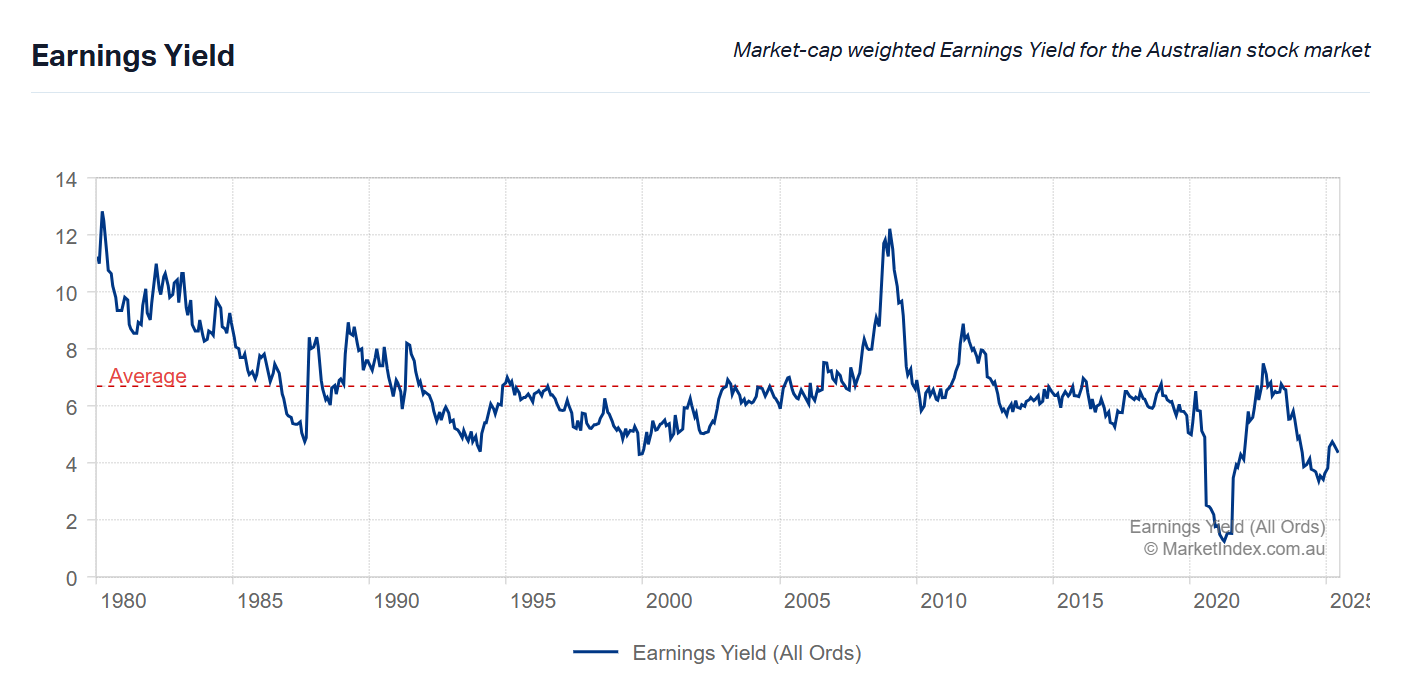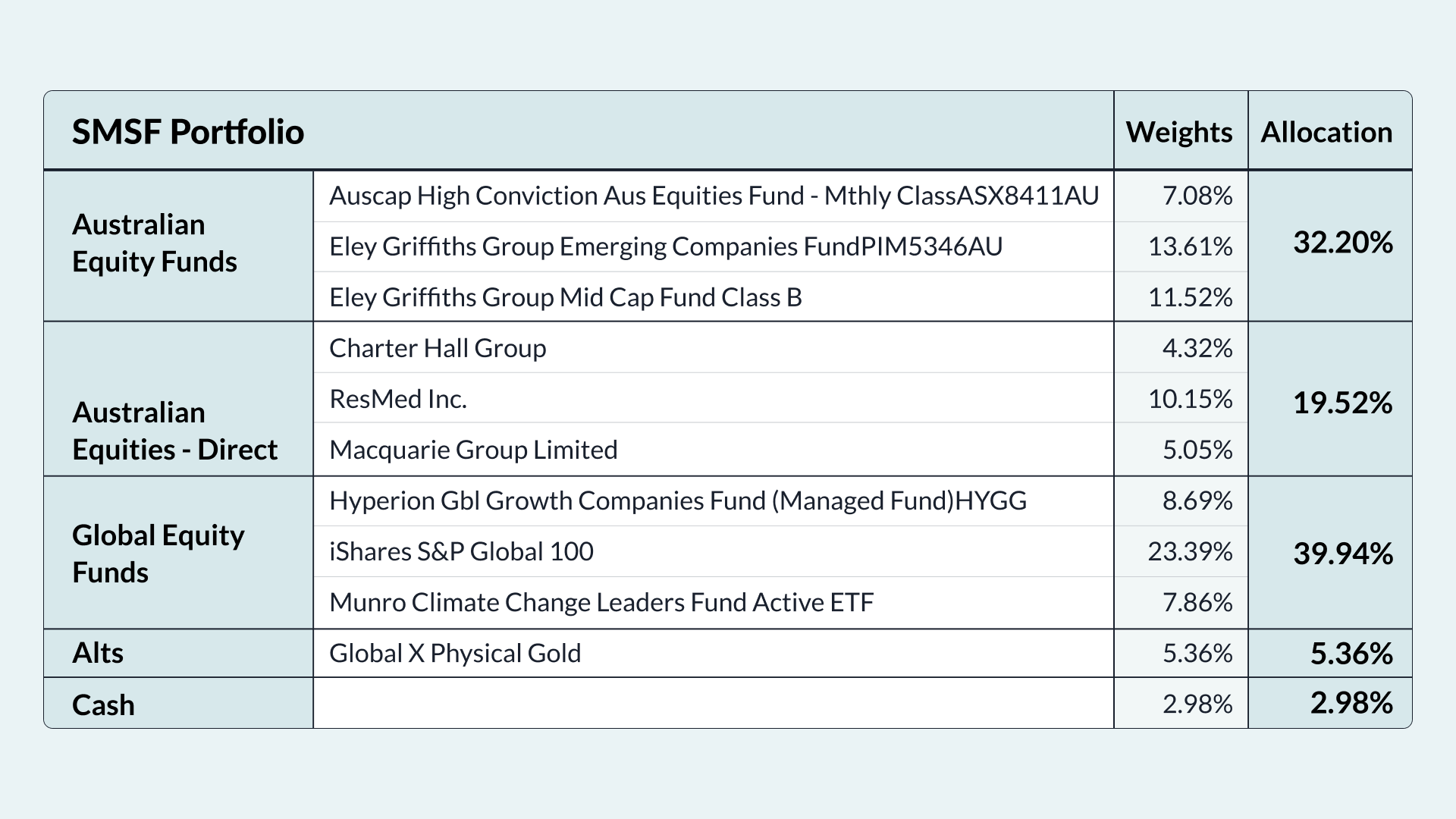How to invest $1 million in 2025 | Mid-year update
Back in January, Ben Clark from TMS Private Wealth sat down with me (and Charlie Viola, who couldn’t make it this time) to talk asset allocation for 2025. We covered my SMSF, picked through some portfolio positioning, and received plenty of reader questions, particularly about private markets.
In response to strong reader interest, I caught up with Ben to get his latest read on markets, provide a brief update on a few tweaks to my SMSF, and hear his framework for breaking down the world of private markets.
I also took the opportunity to ask Ben to address some of the most common questions raised from our first discussion.
If you missed the initial session, you can access it here.
An update on markets
It seems like an age ago now, but if you recall, markets were pretty buoyant at the end of 2024. Ben says markets have come full circle since December, despite the rollercoaster in between.
“It’s almost uncannily similar where we are today versus December. We had a bear market in the US, a sharp V-shaped recovery, and now we’re back where we started.”

The chart above shows the earnings yield of the All Ords Index, which Ben says remains in expensive territory, albeit marginally better than at the start of the year.
“There are two reasons for that. First, we are now rolling onto FY26 earnings forecasts, whereas we were using FY25 back in December. So the market’s expecting a bit of earnings growth this financial year. Second, we’re seeing earnings upgrades in the resource space, which we haven’t seen for a while, and that’s a big part of our index.”
Ben’s key observations are:
- Valuations are looking full at the index level, though there are pockets of value
- Concentration risk in banks and resources (together ~60% of the ASX 200)
- Opportunities in small/mid-caps and sectors outside banks and resources
Ben also points to signs of froth in risk markets, from blockbuster IPOs to Bitcoin’s surge, but says the IPO pipeline reopening is a healthy sign.
“We’ve had three floats in Australia, which are pretty decent size. They’re all still trading above their IPO price. It feels like the floodgates are very slowly opening, then shutting, then reopening in fits and spurts. But I’d say the outlook for the IPO market is good.”
An update on my SMSF

Disclaimer: This is a discussion of my own portfolio and is not a recommendation or endorsement. Please seek professional advice to determine what’s appropriate for your circumstances.
I haven’t made any major changes to my SMSF. However, I knew I was leaning heavily into growth managers and small caps. I’d always intended to trim some of these positions, and my chat with Ben and Charlie earlier this year was the catalyst for making adjustments.
Here’s an overview of the changes:
- Trimmed global growth funds
- Trimmed Australian small caps
- Sold some gold in April and bought more ResMed
- Sold CSL and BHP
The idea was to do some work on private equity funds with the goal of reducing concentration and volatility in the portfolio.
Here’s the problem: researching private equity funds proved far more difficult than I anticipated. I tried to source a list from Livewire’s data provider, but despite the five-figure sum we pay annually, I couldn’t get my hands on one.
I tried using AI searches and Google to build a starting list, but the results weren’t there. So despite taking ~15% off the table, the position sizes look the same. I ended up using the funds to pay down the mortgage on a commercial property held by the SMSF.
I’d encountered the same issue many of our readers described, private equity sounds interesting but feels inaccessible.
Feedback from readers and my own experience was the catalyst for this follow-up session with Ben. What I learned from this session is that there are significant barriers unless you have an adviser. If you use a platform like Netwealth or Hub24, there are some options available, but if you’re looking on the ASX, with the exception of private credit LITs, it’s slim pickings.
Ben’s framework for thinking about private markets
Before getting into the different sub-categories of private equity, Ben outlined two common ways to slice the space.
1. By liquidity – Borrowing from US advisory practice, this means classifying investments as:
- Liquid: Can be bought and sold easily
- Semi-liquids: Limited redemptions (e.g. 5% per quarter)
- Illiquid: Closed-end structures with capital locked up for years
Advisers blend these based on a client’s expected cashflows and investment timeframes.
2. By sub-sector within private markets – The approach Ben prefers.
He emphasises that “private markets” is an umbrella term covering very different areas, each with its own risk/return profile, manager skill set, and role in a portfolio.
This leads into his breakdown of venture capital, growth equity, buyouts, secondaries, fund of funds, infrastructure/private credit, and real estate. I’ve provided a brief summary of each below.
Venture Capital: Invests in very early-stage companies with high growth potential but significant risk. Large returns are possible, but capital loss is a real risk, especially in weaker market years.
Growth Equity: Takes a minority stake in established companies to fund expansion. The aim is to accelerate growth while working alongside the founders, a mix of venture-style upside with more stability.
Buyout: Acquires controlling stakes in companies (private or public) to improve operations, restructure finances, and drive growth before selling. Active management is key to value creation.
Secondaries: Buys existing stakes in private equity funds from investors seeking liquidity before maturity. Often purchased at a discount to net asset value, well-established in the US and growing here.
Fund of Funds: Invests across multiple managers and strategies in one vehicle, offering diversification across venture, growth, buyout, and more. Comes with an extra layer of fees.
Infrastructure & Private Credit: Infrastructure funds target assets like transport, energy, and utilities for stable returns. Private credit lends to companies, property developers, or other funds, often at higher yields than public debt.
Real Estate: Direct investment in property assets or development projects, with income, growth, or both in mind. Less liquid than listed property trusts but offers diversification and inflation protection.
“Track record and size matter in private equity,” Ben says. “Top-quartile performers tend to stay there because they can hire the best people and get the best deals.”
He cites managers like Straight Bat (Australia, mid-market buyouts), Hamilton Lane (global leader in secondaries), and Partners Group (global buyouts) as examples, all accessible via adviser platforms for suitable investors.
Reader questions
Hedge funds
Ben’s wary of most local offerings but says some high-quality offshore funds are becoming more accessible to Australian high-net-worth investors.
Crypto
He hasn’t invested for clients, noting the difficulty in valuing it, and the limited value he can add as an adviser.
“It’s probably best just to do it yourself.”
Alternatives via LITs/ETFs
He prefers direct access to quality managers rather than listed structures, targeting a 15% allocation to alternatives over time, funded by trimming expensive Australian equities.
Key takeaway
Private markets can offer diversification, potential return enhancement, and reduced volatility when blended with public assets. But for most investors, accessing the best opportunities will require going through an adviser and platform.
“We’re using listed to fund unlisted, and replacing expensive, low-growth Australian equities with hopefully high-growth, less volatile private assets.”
If you're interested in this area I'd recommend checking out the full discussion.
1 topic

